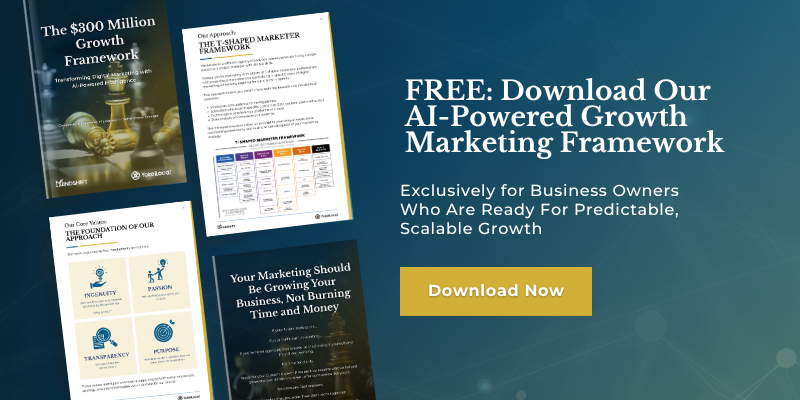Your law firm talks to a lot of prospective clients. Some of them are your ideal client, while others may do more harm than good when it comes to your workload. So how do you identify which will be great and which will hinder success? Identifying clients, their pain points, and values will help you increase efficiency and effectiveness with your marketing efforts. Through the process of creating a client persona for your law firm, you’ll be better equipped in identifying your target clients, recognize the red flags quicker, and win business over your competitors.
What Is a Client Persona?
A client persona may feel a bit like marketing jargon but, put simply, it’s your target audience. It’s the people you want to come through your door and do business with. The folks who can afford your services, present winnable cases, and have good communication with you as their lawyer. A client persona is a profile of your ideal client, inclusive of their age, income, gender, and any other identifying factors related to their demographics. Sometimes a client persona will end here. But what separates a good client persona from a great one is its breadth of detail. A thorough (and truly helpful) client persona will help you market your services to the right people at the right time, by meeting them where they are in their buyer's journey.
What does your ideal client value? What are the problems that need to be solved? What is their behavior like when working with you? All of these nuances, together with more recognizable identifiers make your client persona.
5 Ways a client persona will help you gain clients
Not only is a client persona helpful in your marketing messaging, but ultimately it will help you gain more clients. Here are five ways a client persona will help:
- You’ll understand your target audience’s language. You’ll know what they want and where the look for it.
- It will help you create rich, valuable content for your clients and prospects.
- You’ll build trust with prospects because you’ll have a deeper understanding of their needs.
- You’ll connect with more people looking for your services.
- You’ll be more strategic where you spend your marketing and sales dollars.
How to Create a Client Persona For Your Law Firm
Creating a client persona for your law firm can seem like a daunting task. There are so many types of clients that walk through your doors, and we understand honing in on a few personas can feel downright impossible. But we’re here to make the impossible your reality. A client’s age and income are helpful in understanding your demographic, but it doesn’t give you the entire picture. Age and income don’t explain the psychology behind a client choosing you over another law firm. They don’t account for the complexities of your client's values, thought processes, or behavior. If you don’t know yet, we have a useful step-by-step guide on how to develop the best client persona. We literally wrote the book on how to create a client persona! The World’s Best Buyer Persona System truly works by allowing you to understand your target clients and how to market to them. But here are some steps you can take to build your own client persona.
Begin with demographic data.
First, you’ll need to identify your client persona demographic. Understanding the demographics is foundational to creating your ideal client persona. There are many ways where you can collect this type of information, likely from the systems you already have up and running.
Here are some places to collect aggregate data of your client personas.
- Google Analytics will provide helpful data about the people who visit your website. Google Analytic
s can give you specific data about the types of people who visit your site, from the regions they live
to their gender to the technology they use. - Your CRM System will likely have a database of the clients you worked with within the past. Many
CRM systems allow you to extract bulk data, where you can analyze trends and likenesses.
These are just two sources of information, but they can provide a lot of data. Sifting through it may take time. Here are some important and useful data points to track:
- Gender, race, and age
- Median income
- Zip code or region
- Employment
Once you’ve identified some high-level demographics, it’s time to hone in on their pain points.
UNDERSTAND THEIR PAIN POINTS.
Every client comes to you looking for you to solve a specific problem. No matter the case, every one of them has a pain point — or essentially a problem they need you to solve. Figuring out your ideal client persona pain point takes some introspection. We have a great worksheet to help you figure that out, but some questions to ask include:
- What is the situation that needs resolving?
- What do they need/want from you?
- What other problems have their initial pain point caused?
- What beliefs do they hold around their problem?
- What triggers them to find the solution?
Identifying your clients’ paint points is crucial in understanding their needs and communicating to them directly through outreach and marketing efforts.
Research the noise they're experiencing in the marketplace.
Noise can be distracting. It distracts your clients and it distracts you from gaining their trust and business. Understanding the “noise” in the marketplace will also help you better craft communications and marketing efforts that target your ideal client. A competitor analysis can give you deeper insight into the noise in your specific marketplace or area of law. A comprehensive competitor analysis will help you understand what others are saying to influence prospective clients, and how they’re making their decisions.
Conceptualize why they should hire your firm.
Essentially this means crafting your unique value. Every law firm has a unique value, whether that’s through your services, your experience, your personality, or some other factors, there are attributes that make you a one-of-a-kind — focus on these! They set you apart from your competitors. Unique value propositions position your law firm as distinct from others. Ultimately, identifying your unique value will drive the rest of your marketing efforts because you want to communicate your uniqueness often, so prospects understand exactly why you can provide the best solution for their specific problem.
Finish with how they will feel if they win or lose.
People make purchasing decisions with their emotions — not always with data. While we love data-informed decision-making, understanding emotions is a powerful tool in crafting thoughtful marketing messages that will convert prospects into clients. When creating a client persona, map out the client journey when they win with you and when they lose with someone else. What are their emotions? What do they gain — emotionally speaking — when they win? What do they lose when they lose? Mapping this out will help you focus on your marketing messaging to your target audiences.
Craft a Client Persona Using Our World-Renowned Worksheets
Don’t wait any longer to create a client persona. If you’re looking to reach more of your ideal clients, download our one-of-a-kind World's Best Buyer Persona System. This worksheet will walk you through how to identify and define your client persona, plus how to craft messaging and marketing to reach them. Your marketing will be extremely powerful when your messaging meets your target audience where they are in their buyer’s journey and speaks their language.










